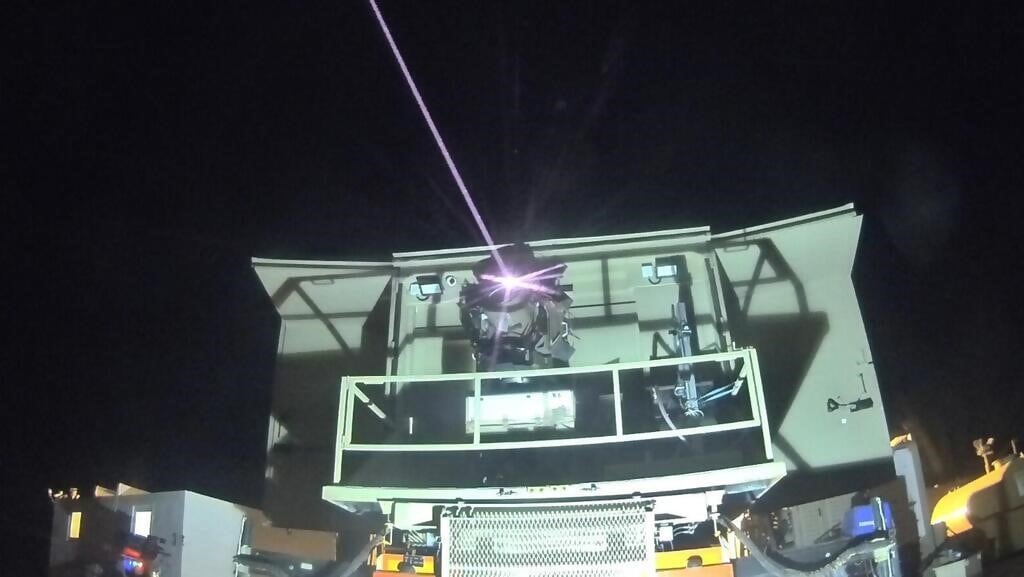WASHINGTON — Videos circulating on social media purporting to show a high-energy laser weapon destroying missiles during the Israel-Hamas war are actually altered clips derived from a military simulation video game.
Cropped, low-resolution footage depicting swarms of overhead projectiles being intercepted in front of a tower are sourced from Arma 3, a photorealistic game billed as a “massive military sandbox” by its publisher, Bohemia Interactive. Multiple prominent accounts on X, formerly Twitter, shared videos over the weekend incorrectly claiming they showed the real-world application of Iron Beam, developed by Israeli company Rafael Advanced Defense Systems.
Czech Republic-based Bohemia Interactive on Oct. 10 warned that its game — set in a futuristic, fictional conflict, and easily modded and recorded by players — was being used to peddle misinformation. Staff at the BBC, the Warzone and the Times of Israel later reported the videos and accompanying descriptions were misleading.
“While it’s flattering that Arma 3 simulates modern war conflicts in such a realistic way, we are certainly not pleased that it can be mistaken for real-life combat footage and used as war propaganda,” Pavel Křižka, a Bohemia Interactive public relations manager, said in a statement.
“With every video taken down, ten more are uploaded each day,” Křižka added. “We found the best way to tackle this is to actively cooperate with leading media outlets and fact-checkers (such as AFP, Reuters, and others), who have better reach and the capacity to fight the spreading of fake news footage effectively.”
Manipulated clips from Arma 3 have previously been attributed to front lines in Afghanistan, Syria and Ukraine.
RELATED

Rafael’s 100-kilowatt Iron Beam is designed to neutralize rockets, artillery and mortars, a combination known as C-RAM, as well as unmanned aerial systems, or C-UAS. It is expected to be operational in 2024 or 2025, C4ISRNET previously reported. The company is also behind the David’s Sling and Iron Dome systems.
Iron Beam is considered a directed-energy weapon. Such wartime tools typically come in two forms. One, like Rafael’s, is high-energy laser; the other is high-power microwave. Whereas the former focuses a beam or beams of energy to blind, cut or inflict heat damage on a target, the latter pumps out waves of energy that fry electronic components and render technologies useless.
Militaries are leaning into directed energy to bolster their respective offensive and defensive arsenals. Lasers and microwaves have their strengths, such as the speed at which they can take down a target, but also have their weaknesses, such as troubles in inclement weather and over longer distances.
The U.S. Department of Defense is spending an average $1 billion a year developing directed-energy weapons. The department requested at least $669 million in fiscal 2023 for unclassified research, testing and evaluation and another $345 million for unclassified procurement, according to the Congressional Research Service.
Rafael reaped nearly $3.5 billion in defense revenue in 2022, earning it the No. 34 spot on the Defense News Top 100 list of the world’s largest defense contractors.
A model of Iron Beam was displayed this month at the Association of the U.S. Army convention in Washington.
Colin Demarest was a reporter at C4ISRNET, where he covered military networks, cyber and IT. Colin had previously covered the Department of Energy and its National Nuclear Security Administration — namely Cold War cleanup and nuclear weapons development — for a daily newspaper in South Carolina. Colin is also an award-winning photographer.








